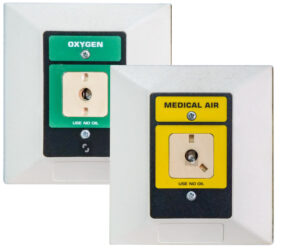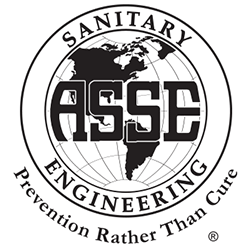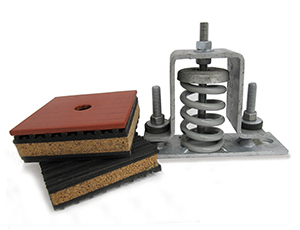
There are several distinct differences between medical air and oxygen for patient use. Without getting too technical, a brief explanation of both is below:
Medical Air:
Medical air differs from oxygen and ordinary air. It is an ultra-clean, dry, purified, colorless, odorless, non-flammable gas. Its main components are nitrogen, oxygen and argon. It also has trace elements of other inert gases and water vapor. If the air is properly cleaned and processed it can be suitable for a human to breathe.
Hospitals use medical air for dozens of patient treatments including ventilators and incubators. It is also used during anesthesia. Medical facilities could buy and use their medical air from a cylinder. However, in large quantities, this is expensive and inefficient.
Medical air is one of the few gases that a facility can create on-site. Medical air compressors, known in the industry as source equipment, create this specialized air. This equipment contains specific, state-of-the-art components that compress, process and produce clean, dry, medical air.
High-quality compressed air filtration systems are essential to prevent the risk of medical air contamination. Contaminated air could lead to patient infections, illness and even death. The medical air and air distribution system must be carefully installed and maintained. 24/7 monitoring and regular testing procedures are necessary.
The United States Pharmacopoeia considers medical air to be a manufactured drug. Medical air is labeled using the colors black on yellow in the medical industry.
Oxygen:
Oxygen is an individual gaseous component that exists as a part of ordinary air. Most oxygen is delivered to a medical facility as a bulk liquid and is stored in a large tank on the hospital site. To make a long story short, liquid oxygen is drawn off as needed, processed and turned into a gas. A controlled manifold regulates the flow of the gas before it enters the hospital pipework. It is then distributed throughout the hospital into specific areas for use.
Combining pure oxygen with other gases creates oxygen blends suitable for patient use. When mixed, oxygen can be used in countless patient treatments and surgery. However, oxygen can be dangerous if administered improperly and should be handled with care.
The United States Pharmacopoeia considers oxygen to be a manufactured gas. It may also be labeled a drug depending on its mixture and the patient application. Although oxygen is not flammable, it is an oxidizer. An oxidizer, when introduced to other flammables, can intensify the burning or allow items to ignite easier. Oxygen is labeled using the colors white on green in the medical industry.
Both gases serve very different purposes in a medical setting. They must be labeled carefully. A mix-up when dispensing to a patient could be serious. Medical air and oxygen are often combined depending upon patient treatments. They are both life support gases and are highly regulated. Both equipment systems are monitored by alarms at the point of supply. Both gases are tested at specific intervals by third party, certified testing agencies.
If you have any source equipment questions or issues, please contact us. We’ll be happy to help! Here at airandvac.com we manufacture our medical air and vacuum source equipment packages with care. We also service, repair and maintain medical air and medical vacuum systems. Take a better look at us on our web site at www.airandvac.com.









